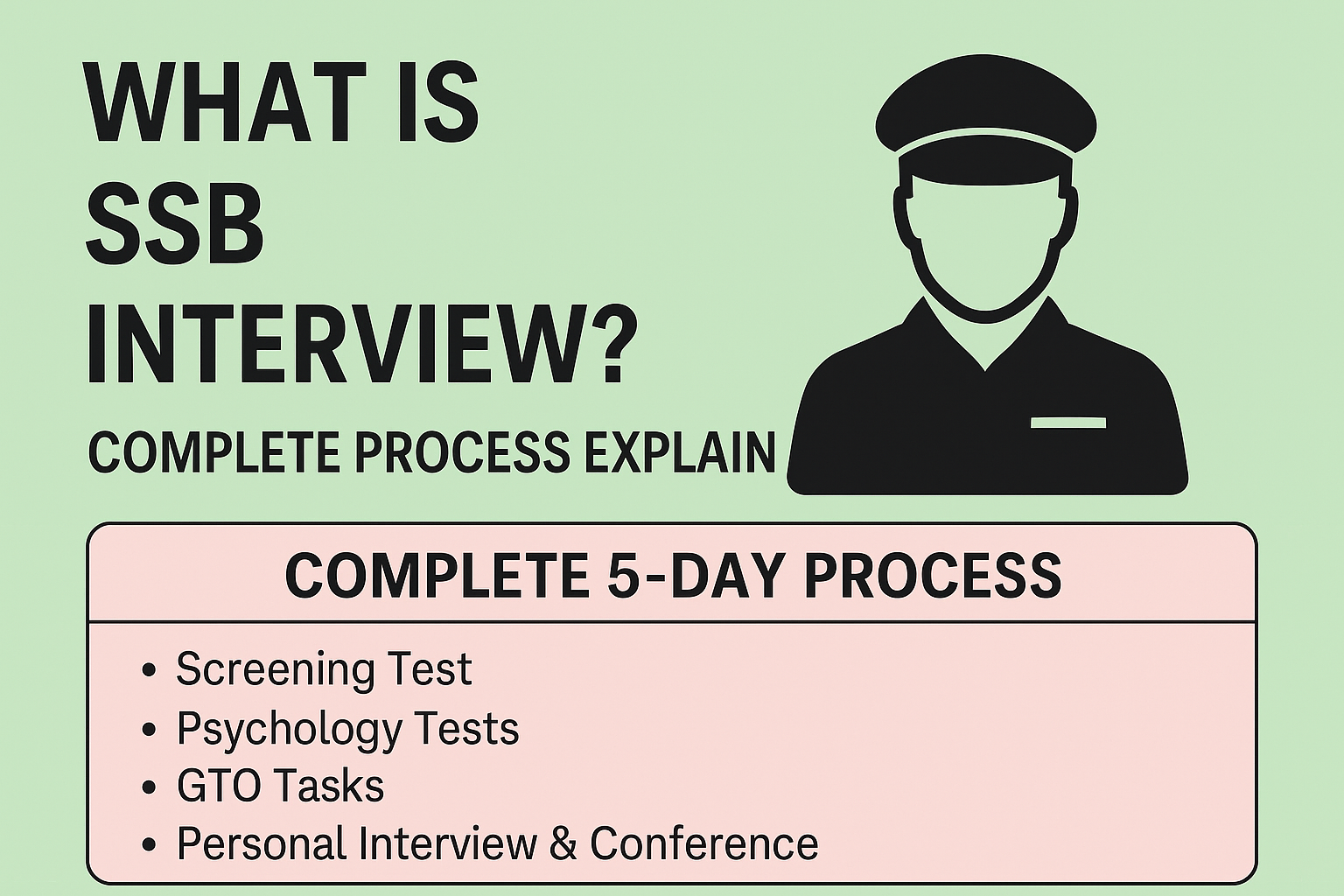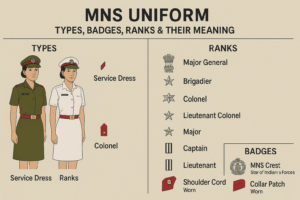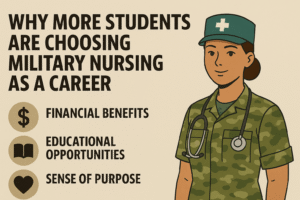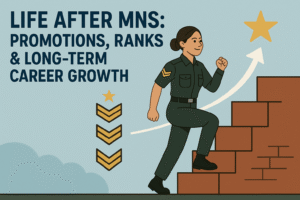The SSB (Services Selection Board) Interview is a crucial part of the selection process for candidates aspiring to join the Indian Armed Forces — Army, Navy, and Air Force — as officers. Recognized as one of the most challenging and comprehensive officer selection processes in the world, the SSB interview evaluates a candidate’s personality, intelligence, leadership, and suitability for a career in the military.
This SEO-friendly article will guide you through what the SSB interview is, its complete process, tips to prepare, and an FAQ section to clear common doubts.
What is the SSB Interview?
The SSB interview is a five-day assessment process conducted by the Services Selection Board under the Ministry of Defence, India. It is designed to identify Officer-Like Qualities (OLQs) in a candidate, using scientific and psychological testing methods.
Candidates are shortlisted for the SSB interview based on:
Written exams like NDA, CDS, AFCAT, or INET
University Entry Scheme (UES)
Technical Entries like TES, SSC Tech, etc.
Direct entries such as NCC Special Entry, JAG Entry
Key Objectives of the SSB Interview
Assess mental aptitude, psychological resilience, and emotional intelligence
Evaluate communication, teamwork, and leadership skills
Test decision-making, planning, and crisis management abilities
Judge overall suitability for life as a commissioned officer
SSB Interview: Complete 5-Day Process Explained
Day 0: Reporting and Document Verification
Candidates report to the SSB centre and undergo document checks
Allotted chest numbers and accommodation
Day 1: Screening Test (Stage I)
This is an elimination round. Only selected candidates proceed to the next stages.
OIR (Officer Intelligence Rating) Test
Verbal and Non-verbal reasoning questions
Time-bound MCQs
PPDT (Picture Perception and Discussion Test)
A picture is shown for 30 seconds
Write a story (within 4 minutes)
Group discussion and narration of story
Result: Candidates who clear Stage I move to Stage II. Others are sent back the same day.
Day 2: Psychology Tests
These are written assessments conducted by trained psychologists to evaluate a candidate’s subconscious traits.
TAT (Thematic Apperception Test) – Write a story based on shown pictures
WAT (Word Association Test) – Respond to 60 words with the first thought that comes to mind
SRT (Situation Reaction Test) – Provide reactions to 60 real-life scenarios
SD (Self Description Test) – Write about yourself from different perspectives (self, parents, friends, teachers)
Day 3 & 4: GTO Tasks (Group Testing Officer Tasks)
This is the most dynamic stage. It includes both indoor and outdoor tasks:
Group Discussion
Group Planning Exercise (GPE)
Progressive Group Task (PGT)
Group Obstacle Race (Snake Race)
Lecturette (short talk)
Half Group Task (HGT)
Individual Obstacles
Command Task
Final Group Task (FGT)
The GTO observes candidates for leadership, cooperation, initiative, confidence, and team spirit.
Day 5: Personal Interview and Conference
Personal Interview
One-on-one interview with an officer (lasts 30–60 minutes)
Topics include academics, hobbies, current affairs, family background, and personal goals
Conference
All assessors (Psychologist, GTO, Interviewing Officer) sit together
Final recommendation is made
Each candidate has a brief closing interaction
Medical Examination
Candidates who are recommended by the SSB board undergo a comprehensive medical examination to assess physical fitness and health.
Final Merit List
Final selection is based on:
SSB performance
Medical fitness
Availability of vacancies
Merit list is published by the respective service HQs (Army, Navy, or Air Force).
How to Prepare for the SSB Interview
Know yourself thoroughly (introspection and self-awareness)
Stay updated on current affairs and defence news
Practice group discussions and public speaking
Improve your physical fitness for obstacle tasks
Build mental agility and problem-solving skills
Use SSB coaching or guidance, if needed
Conclusion
The SSB interview is not just a test of knowledge but a holistic evaluation of character, thinking ability, and officer potential. It remains the most authentic and respected selection method for choosing officers for the Indian Armed Forces. Proper preparation, a calm mind, and consistent self-improvement are key to cracking it successfully.
Frequently Asked Questions (FAQ)
1. What is the full form of SSB?
SSB stands for Services Selection Board.
2. Who conducts the SSB interview?
It is conducted by the Ministry of Defence, India, through various SSB centres for the Army, Navy, and Air Force.
3. How many times can I appear for the SSB interview?
There is no official limit, but each entry has its own eligibility criteria regarding age and number of attempts.
4. Is the SSB interview tough?
Yes, it is considered challenging because it assesses personality traits and not just academics. Only a small percentage of candidates make it through.
5. What are the passing marks in the SSB interview?
There are no fixed passing marks. Performance across various assessments is considered collectively.
6. Do I need to be fluent in English for SSB?
While fluency helps, clear communication and confidence are more important than grammar or accent.
7. Is coaching necessary to crack SSB?
Not mandatory, but coaching can help with structured preparation, especially for first-time candidates.






